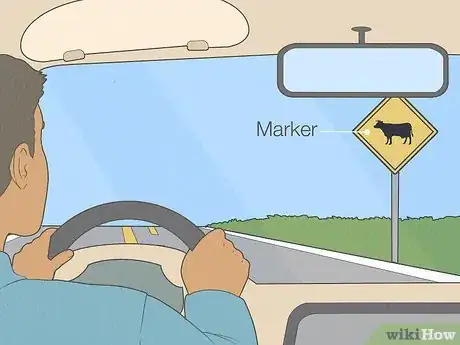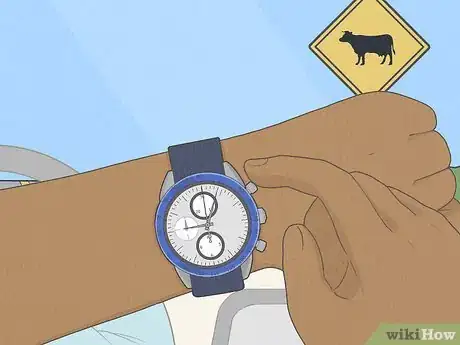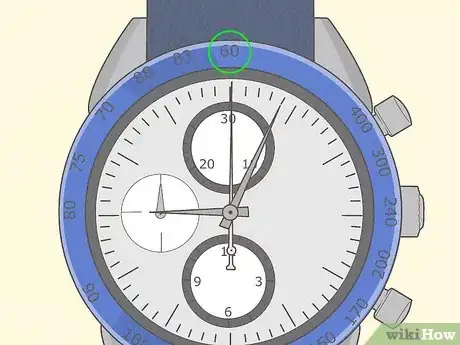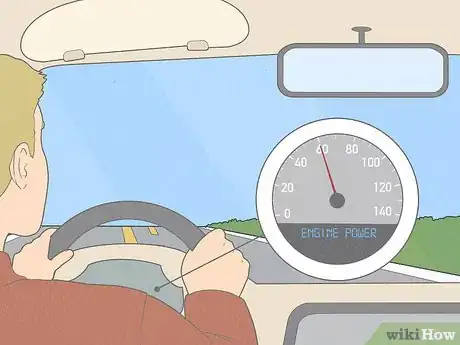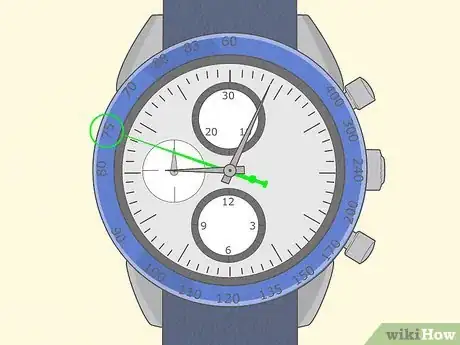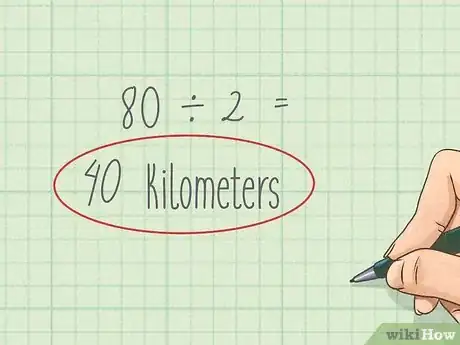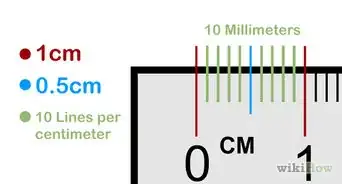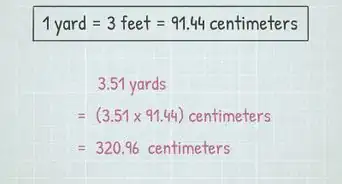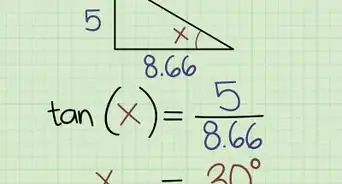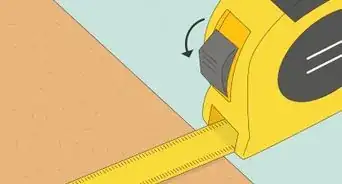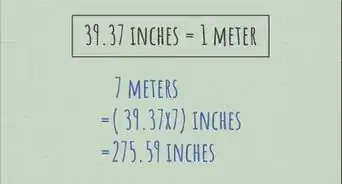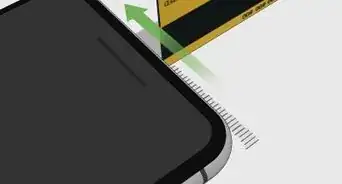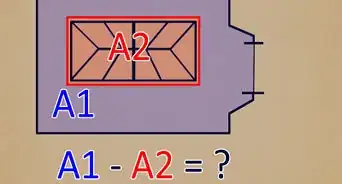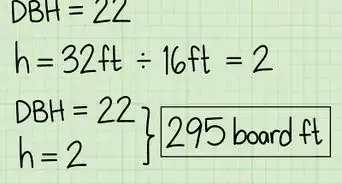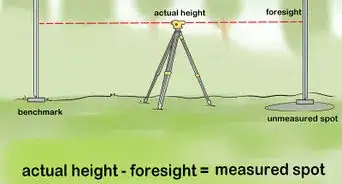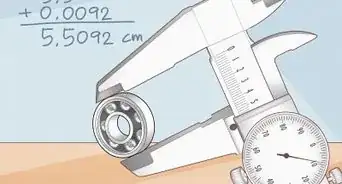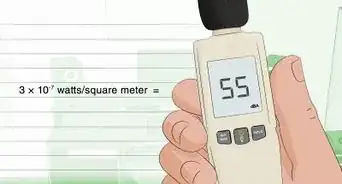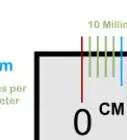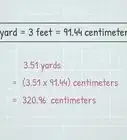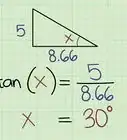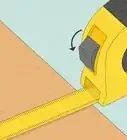This article was co-authored by wikiHow Staff. Our trained team of editors and researchers validate articles for accuracy and comprehensiveness. wikiHow's Content Management Team carefully monitors the work from our editorial staff to ensure that each article is backed by trusted research and meets our high quality standards.
This article has been viewed 42,751 times.
Learn more...
If you've ever wondered what that scale etched into the outer ring of your watch is, now's the time to learn! It's called a tachymeter, and it consists of a scale that runs to 3,600, which is the number of seconds in an hour. It can be used to convert time—measured in seconds per unit—into a speed measurement in units per hour. And if you're traveling in a vehicle at a constant speed, you can also use it to calculate distance traveled. While it might sound tricky, it's pretty simple once you get used to it!
Steps
Measuring Speed
-
1Locate the start of the tachymeter scale at the 6-, 7-, or 9-second mark. Often, the tachymeter scale starts at the 7-second mark, which is at 500 units of speed. On other models, the scale either starts at 6 seconds and 600 units of speed or 9 seconds at 400 units of speed.[1]
- You can also find the tachymeter scale on the bezel—the groove that holds the watch's cover in place – or just outside of the clock face.
- Take note of the number "60," which is the final number of the scale regardless of the tachymeter. For example, regardless of whether your tachymeter starts at the 6-second mark at 600 units of speed or the 7-second mark at 500 units of speed, the final number is 60 units of speed at the start of the clock.
-
2Determine the unit of the speed measurement and its markers. Before you measure an object's speed with a tachymeter, you need to decide what unit of measurement you're using: miles or kilometers. After this, you need to make sure you can accurately determine 1 unit of this distance. For example, if you're measuring the speed of a car across 1 kilometer, make sure you have 2 reference points or markers for the start and end of this distance.[2]
- If you're driving down the highway and measuring your vehicle speed, many highways across the world have kilometer markers on exit signs—use these as your markers.
Advertisement -
3Start the chronograph once the object passes the first marker. The chronograph is an analog stopwatch that uses either its own hand or the seconds hand of the clock. Once the object you're measuring moves past the first marker, start the chronograph by pressing the button located at the 2 o'clock position of the watch.[3]
- If you need to reset your chronograph to 0, press the button located at the 4 o'clock position.
-
4Stop the chronograph once the object passes the second marker. After the object passes the second marker, stop the chronograph by pressing the button at the 2 o'clock position again.[4]
- If you're having trouble starting and stopping your chronograph, take a look at the owner's manual. If you don't have one, check your watch manufacturer's website and look for a PDF copy of your model's instructions.
-
5Determine speed by the tachymeter scale value at the chronograph hand. After stopping the chronograph, follow its hand to the tachymeter scale to obtain your speed measurement. For example, if the hand traveled to the 45-second mark, the hand aligns with 80 on the tachymeter. This means the object was traveling either 80 miles per hour or 80 kilometers per hour.[5]
- Remember that the tachymeter can only measure speeds of 60 units (miles per hour or kilometers per hour) or over.
Measuring Vehicle Distance
-
1Find your watch's tachymeter scale at the 6-, 7-, or 9-second mark. Most tachymeter scales start at the 7-second mark, which is 500 units of speed on the scale. Others start at 6 seconds and 600 units of speed or 9 seconds and 400 units of speed.
- The tachymeter scale is also located along the bezel, which is the groove that holds the watch cover. On some watches, it's also located just outside of the clock face.
- Be sure to note the number "60," which is the final number on all tachymeter scales
-
2Drive at a constant speed of at least 60 kilometers or miles per hour. Tachymeters don't run less than 60, meaning you can't measure distance if you're traveling less than 60 kilometers or miles per hour. For example, if you're driving on the highway at a constant speed, note your speed on the dashboard in either kilometers or miles per hour.[6]
-
3Start the chronograph to begin measuring your distance. The chronograph is a stopwatch for analog watches that uses either its own hand or the seconds hand. On most watches, it can be started and stopped by pressing the button at the 2 o'clock position on the watch. If you're measuring distance, you don't need two markers—all you need to do is travel a constant speed. Once you start the chronograph, all you need to do is wait until the chronograph hand hits the tachymeter value equal to your speed.[7]
- Always remember to reset your chronograph before using it. This is typically accomplished by hitting the button at the 4 o'clock position on your watch.
-
4Determine distance when the chronograph hand hits the tachymeter value equal to your speed. Once the chronograph hand reaches the value equal to your speed, you have traveled 1 unit of distance. For example, if your speed is 75 kilometers an hour, you have driven 1 kilometer once the chronograph hand hits the tachymeter value of 75. If you're driving 70 miles an hour, you've driven 1 mile when your chronograph hand hits 70.[8]
- If you're not traveling at least 60 units of speed, the tachymeter won't be able to give you a distance reading without additional calculations.
-
5Multiply your initial speed by 2 if you're traveling less than 60 units of speed. Since the tachymeter runs until 60, lower speeds can't be directly measured. To measure them, you must start by multiplying your speed by 2. For example, if you're traveling 40 kilometers per hour, 40 x 2 is 80.[9]
- Remember that your speed must remain constant when measuring distance with a tachymeter.
-
6Divide the final tachymeter distance reading by 2. When you're calculating distance traveled at less than 60 units of speed, the initial speed is always doubled. This means you must always divide the final answer by two for the speed measurement.[10]
- Be sure that you multiplied the initial speed by 2 if you're dividing the final speed reading.
- Consider the previous example: you're traveling 40 kilometers an hour. If you double this number you get 80, which means you've traveled 1 kilometer when the chronograph hand hits 80. Now, divide 80 by 2 and the answer is 40. This means that you have traveled 40 kilometers.
References
- ↑ https://techjourney.net/how-to-use-tachymeter-function-on-watch-bezel-usage-instruction-and-definition/
- ↑ https://techjourney.net/how-to-use-tachymeter-function-on-watch-bezel-usage-instruction-and-definition/
- ↑ http://www.citizenwatch-global.com/support/exterior/tachymeter.html
- ↑ https://www.fashionbeans.com/article/tachymeter-watch-guide/
- ↑ https://techjourney.net/how-to-use-tachymeter-function-on-watch-bezel-usage-instruction-and-definition/
- ↑ https://www.fashionbeans.com/article/tachymeter-watch-guide/
- ↑ https://techjourney.net/how-to-use-tachymeter-function-on-watch-bezel-usage-instruction-and-definition/
- ↑ https://www.fashionbeans.com/article/tachymeter-watch-guide/
- ↑ https://www.fashionbeans.com/article/tachymeter-watch-guide/
About This Article
To use a tachymeter to measure speed, start by finding the start of the tachymeter scale at the 6, 7, or 9 second mark. Before you measure an object’s speed, find 2 reference points or markers for the start and end of the distance. For example, if you’re on the highway and measuring your vehicle speed, use the kilometer markers on exit signs as your markers. When you pass the first marker, start the chronograph by pressing the button at the 2 o’clock position. Press the button again to stop the chronograph once you pass the second marker. Finally, follow the chronograph’s hand to the tachymeter scale to find your speed measurement. For instance, if the hand traveled to the 45-second mark, it will align with the 80 on the tachymeter, so the object was traveling at either 80 miles or kilometers per hour. To learn how to use your tachymeter to measure vehicle distance, keep reading!

